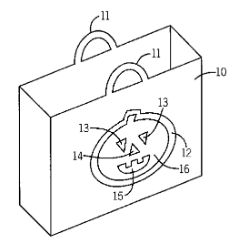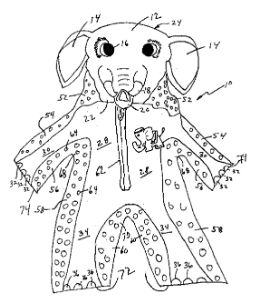- in Asia
- with readers working within the Pharmaceuticals & BioTech and Law Firm industries
- within Consumer Protection, Compliance, Government and Public Sector topic(s)
Growing up, my mom had a rule: you have to make your own Halloween costume from whatever we had at home. This worked fine until the year I wanted to be He-Man. Unfortunately, we couldn't use household items to harness the power of Grayskull. Eventually, my mom gave in and bought the costume. I'm still working on the homemade version, but the gains just aren't coming at the gym. Maybe less blogging and more bench pressing would help.
With that DIY background, I've always been fascinated by the technology hiding in Halloween costumes. And as you can imagine, the world of spooky season is crawling with patents. Every year, inventors dream up new ways to make costumes brighter, safer, gorier, or just plain cooler. Behind every glowing pumpkin and motion-activated skeleton, there's probably an inventor and a patent attorney, grinning somewhere in the dark.
While some of us are busy finding last-minute costumes, some inventors are busy filing claims. Take U.S. Patent No. 6,854,131, titled "Illumination and Halloween Costume." This invention adds light-emitting and reflective elements so kids can stay visible while trick-or-treating. It's part safety device, part costume, proof that when you add a functional twist to a familiar product, you can cross the line from art project to patentable invention.
Even the candy buckets have risen from the IP grave. U.S. Patent No. 6,619,810 protects a "Halloween Treat Carrier Including Glow-in-the-Dark Material." This invention is a reminder that sometimes the smallest tweak, such as adding photoluminescent material, can breathe new life into an otherwise ordinary object. Novelty doesn't always mean inventing something new from scratch; sometimes it's about seeing the familiar through fluorescent eyes.

For those who like a little more blood with their innovation, U.S. Patent No. 6,093,475 discloses a "Bleeding Costume Element." Picture a transparent mask or chest plate with an internal fluid pump that circulates fake blood. This invention is half horror prop, half engineering experiment, and a textbook case of how adding a mechanical feature can make even a gag item a serious piece of IP.
And because no Halloween is complete without flashing lights and jump scares, U.S. Patent No. 6,035,447 covers a "Halloween Mask with Flash Device." Think of it as a wearable strobe effect: dramatic, modular, and reusable. A frightfully good example of early user-customizable tech long before "modular design" was trendy.
My personal favorite is U.S. Patent No. 6,904,612, a "Weather and Climate Adaptive Halloween Costume." This gem combines insulation and ventilation panels so trick-or-treaters can stay warm in Minnesota or cool in Miami without sacrificing their spooky aesthetic.

The claims read like bedtime reading for patent nerds:
(a) a flexible garment base portion made of plush fabric,
(b) an insulating layer,
(c) a venting portion functioning as a ventilator,
(d) a hood, and
(e) a plush animal head disposed on said hood.
But there's one fatal flaw: "a plush animal head." This limitation narrows the scope to, well, plush animals. So if you made the same costume with an alien head or a vampire head, you might escape infringement, unless, of course, someone argues an alien is an animal. (Patent lawyers have lost sleep over less.)
The lesson? A single word can make your claim a trick or a treat. Draft too narrowly and competitors can design around you. Draft too broadly and the examiner will chase your claim back to the graveyard. The sweet spot, like a full-size candy bar, is hard to get but worth the effort.
Lessons from the Pumpkin Patch
These Halloween patents remind us that innovation doesn't only live in laboratories, it lurks in closets, garages, and sewing rooms too. And the line between "craft project" and "patentable invention" is thinner than a vampire's reflection.
Here's the takeaway for inventors and creative professionals alike:
- Add a technical feature (e.g., lighting, airflow, motion) and you're in utility-patent territory.
- Add a distinct ornamental design, and you're looking at design-patent protection.
- Add a recognizable character or logo, and you've just summoned the trademark and copyright spirits.
Every creative spark can become protectable IP if you frame it right. The real magic is understanding where your idea fits in the IP cauldron and choosing the right potion to protect it.
So when you see a glowing candy bucket or a bleeding mask, remember: someone had to think it up, build it, and file for it. Even in a world of witches, ghosts, and goblins, there's nothing scarier than an unprotected invention.
Now I'm off to the gym so maybe I'll have the physique to pull off a He-Man costume by Halloween 2026... but at this rate, I may have to settle for Orko.
The content of this article is intended to provide a general guide to the subject matter. Specialist advice should be sought about your specific circumstances.
[View Source]

